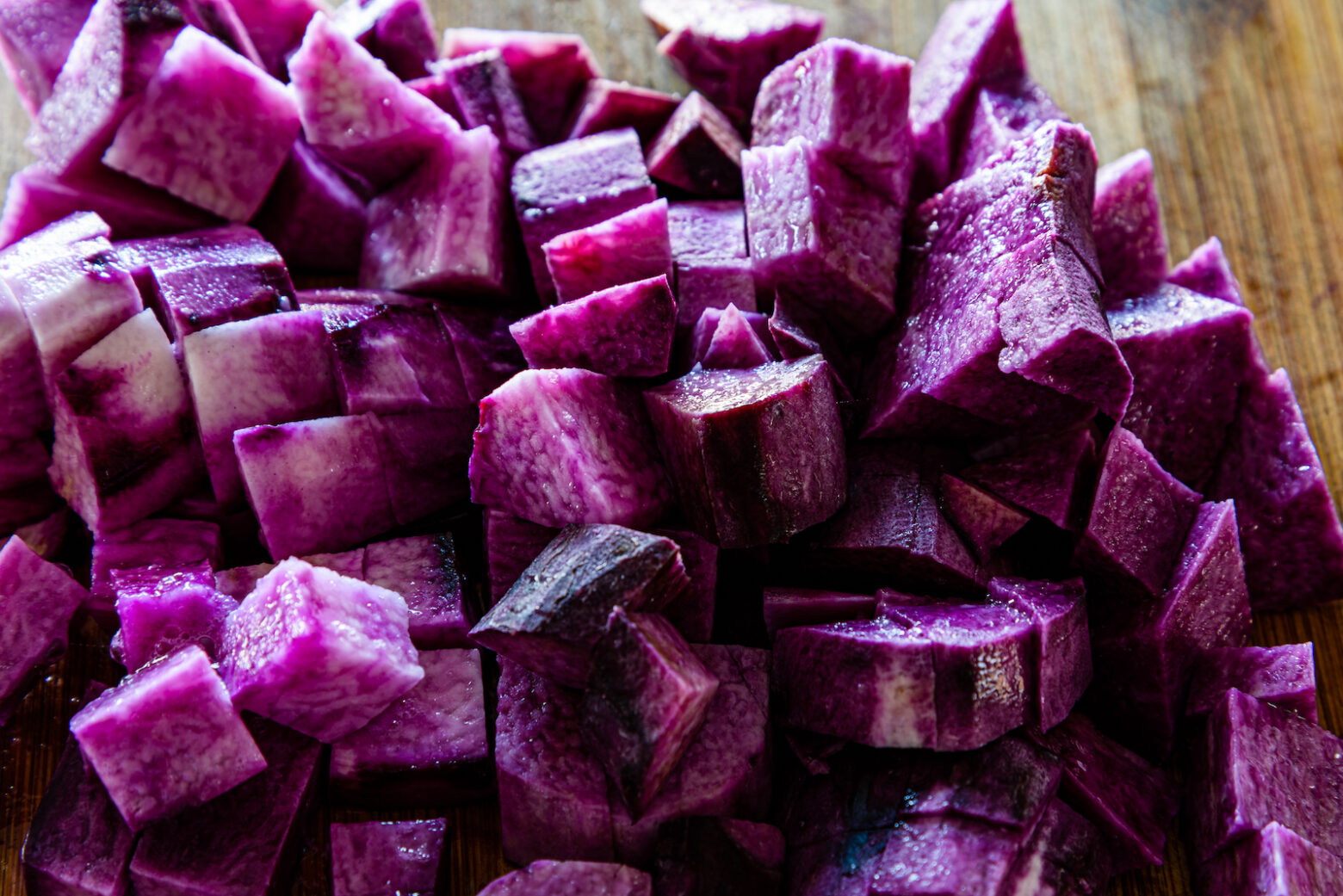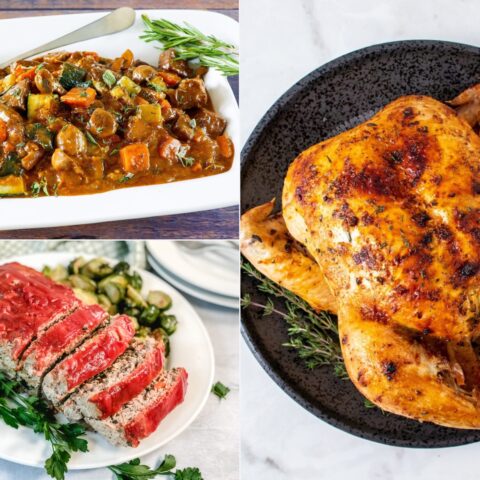What Is Ube and How to Cook It

For the past few years, ube has been a trendy ingredient used to create naturally sweet, flavored treats. Chances are, you’ve come across ube flavored ice cream, baked goods, jams, beverages, and more at your local grocery store or coffee shop. Ube is hard to overlook, thanks to its eye-catching lavender hue. But what is ube, exactly? What does ube taste like and is it good for you? And what can you cook with it? Let’s explore this purple tuber.
Ube Is a Sweet Tuber
Ube is a purple yam known for its sweet, vanilla-like flavor. It’s a starchy root vegetable classified as a tuber that originated from Southeast Asia. [1] But great flavor is not the only benefit of cooking or eating ube. Similar to sweet potatoes, ube is rich in antioxidants that may reduce the risk of various diseases.
See Why Ube Is Healthy
What makes ube a nutritional powerhouse is the presence of a pigment called anthocyanin [2]. This pigment is rich in antioxidants and is also found in various berries, fruits, and vegetables. Anthocyanins have medicinal potential and can be effective in preventing diabetes, cancer, inflammation, obesity, and cardiovascular diseases. [3]
Ube is packed with an abundance of vitamins and minerals that contribute to its health benefits. According to the U.S. Department of Agriculture, [4] ube contains the following essential nutrients:
- Vitamin A promotes healthy skin and supports eye health.
- Vitamin C has been shown to aid in wound healing and tissue repair.
- Calcium is an essential micronutrient that supports strong bones and proper muscle function.
- Iron is necessary for overall body development and strength.
- Fiber is good for maintaining gut health and regulating bowel movements.
Is Ube Paleo?
If you’ve been following us from the beginning, you might be a bit confused. Back when The Paleo Diet® was initially defined, Dr. Cordain believed that tubers like ube should not be included in The Paleo Diet®. However, there has been a change in perspective, driven by research which led to a reassessment of nutritional value and benefits in certain tubers.
Since then, Dr. Cordain appealed his original claim and rebutted that root vegetables such as sweet potatoes, yams, beets, carrots, and turnips are nutritious tubers that make tasty, healthy additions to The Paleo Diet®. [5]
The Difference Between Ube and Purple Sweet Potatoes
Ube is often mistaken for purple sweet potato because of its similar vibrant purple color and sweet vanilla taste. However, ube originates from Southeast Asia, while purple sweet potatoes are from Central and South America. Additionally, sweet potatoes tend to be much drier than ube. [6]
The true difference between the two lies in their nutritional composition. Ube does not contain any sugar, whereas purple sweet potatoes have a small amount of sugar. Furthermore, purple sweet potatoes have approximately five times as much sodium as purple yams. [4,7] To be clear, purple sweet potatoes are nutritious, just not to the same extent as ube.
[RELATED: Are Sweet Potatoes Healthy?]
What to Cook with Ube
Since ube tastes sweet and has a mild vanilla flavor, many products use ube as a sweetener in desserts and treats. But you can also cook ube very much like sweet potatoes. Typically, cooking with ube involves removing the tough outer skin to reveal its vibrant purple interior. (This color can be extracted and used as a natural food coloring in cooking. [3]) You can also easily substitute ube for sweet potatoes in most recipes to infuse a unique flavor into your dishes.
Try cooking with ube! Here are some recipes for which ube would pair well or swap out with sweet potato:
If you don’t believe the social media posts or trendy coffee shops, take it from us—ube is healthy for you and will add a delicious flavor to your recipes. Try it out for yourself; we can almost assure you that you won’t be disappointed.
References:
- McCabe S. 7 Benefits of Purple Yam (Ube), and How It Differs from Taro [Internet]. Healthline. 2019. Available from: https://www.healthline.com/nutrition/ube-purple-yam
- Health Benefits of Yams [Internet]. WebMD. Available from: https://www.webmd.com/diet/health-benefits-yams
- Khoo HE, Azlan A, Tang ST, Lim SM. Anthocyanidins and anthocyanins: Colored Pigments as food, Pharmaceutical ingredients, and the Potential Health Benefits. Food & Nutrition Research. 2017 Aug 13;61(1):1361779.
- FoodData Central [Internet]. fdc.nal.usda.gov. [cited 2023 Nov 8]. Available from: https://fdc.nal.usda.gov/fdc-app.html#/food-details/2111517/nutrients
- Cordain L. The Paleo answer : 7 days to lose weight, feel great, stay young. Hoboken, N.J.: John Wiley & Sons; 2012.
- Bae, Corin MJ. “Purple Sweet Potatoes vs. Ube: What’s the Difference?” Tasting Table, 13 Sept. 2023, www.tastingtable.com/1389004/difference-purple-sweet-potato-ube/.
- FoodData Central [Internet]. fdc.nal.usda.gov. [cited 2023 Nov 8]. Available from: https://fdc.nal.usda.gov/fdc-app.html#/food-details/2553101/nutrients
Isabella Mead
Isabella Mead is the Assistant Project Manager at The Paleo Diet and has experience in creating digital content for lifestyle and nutrition brands.
More About The Author



